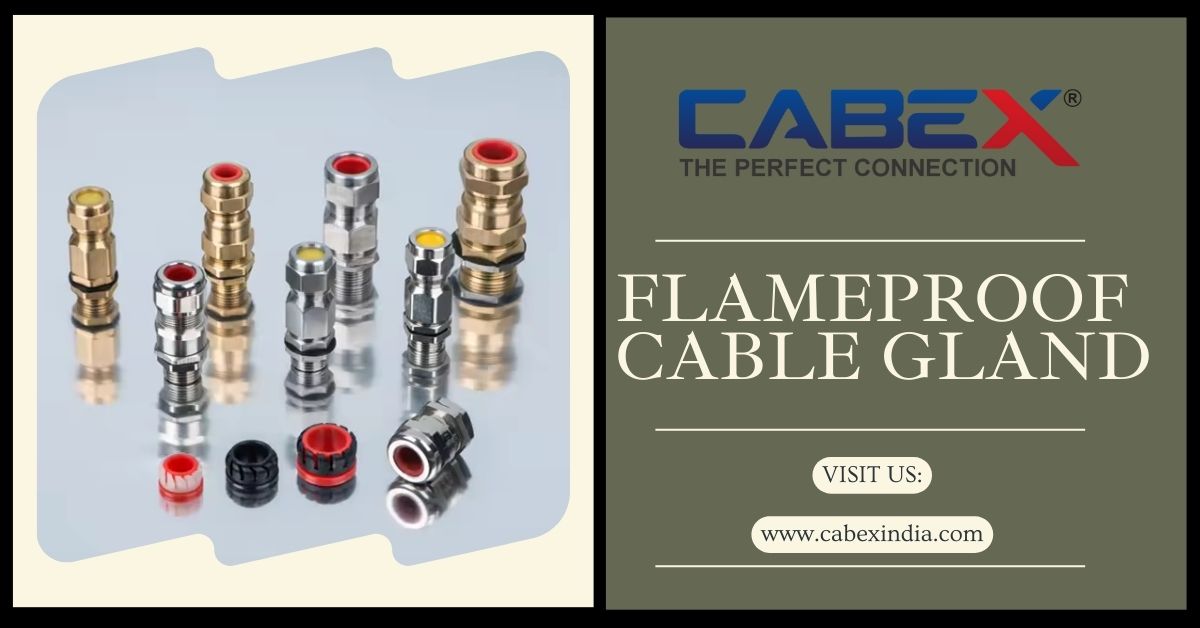Understanding the Differences Between Aluminium and Brass Cable Glands

Strong 8k brings an ultra-HD IPTV experience to your living room and your pocket.
In any electrical installation, ensuring a secure and reliable connection between cables and equipment is paramount. One critical component that helps achieve this is the cable gland. These devices are designed to securely attach and seal the cable entry into an enclosure, junction box, or electrical equipment, safeguarding the system against moisture, dust, and other environmental contaminants. Aluminium and brass cable glands are two of the most popular types available, each offering unique advantages depending on the nature of the application. This article will explore the features, benefits, and applications of both aluminium and brass cable glands, providing you with the knowledge to choose the right option for your needs. What Are Cable Glands and Their Purpose? A cable gland is a mechanical device used to connect and secure a cable to an electrical enclosure, providing both a tight seal and strain relief. It ensures that the cable remains securely fixed, preventing accidental disconnections while protecting the electrical system from external elements like dust, moisture, and other contaminants. The choice of material for the cable gland is essential because it determines the gland’s ability to withstand various environmental factors, mechanical stress, and electrical performance. Aluminium and brass are two of the most widely used materials for cable glands, with each offering distinct properties that make them suitable for different types of electrical installations. Aluminium Cable Glands: Advantages and Applications 1. Lightweight and Easy to Install One of the primary advantages of aluminium cable glands is their lightweight nature. Aluminium is one of the lightest metals available, making it easy to handle and install, especially in large-scale projects. This characteristic is particularly beneficial in applications where weight reduction is a key consideration, such as in railways, aviation, and construction. 2. Excellent Corrosion Resistance Aluminium forms a protective oxide layer on its surface, which provides a natural barrier against corrosion. This makes aluminium cable glands ideal for environments with moderate exposure to moisture, humidity, or mild corrosive elements. Aluminium is commonly used in outdoor electrical installations, street lighting, and solar systems, where it offers a balance of protection and cost-effectiveness. 3. Economical Option for General Use When compared to brass, aluminium is more affordable, making it a preferred choice for standard electrical systems or projects with budget constraints. For applications that do not demand extreme mechanical strength or resistance to severe environmental conditions, aluminium cable glands are a cost-effective solution without compromising on safety or reliability. 4. Adequate Electrical Conductivity for Low-Power Applications Although not as conductive as brass, aluminium provides adequate electrical conductivity for many general-purpose electrical systems. This makes aluminium cable glands a suitable option for low-voltage and medium-voltage circuits, where high conductivity is not a critical factor. 5. Suitable for Indoor and Non-Hazardous Environments Aluminium cable glands are perfect for use in indoor electrical systems where the risk of exposure to harsh environmental factors is minimal. They are widely used in commercial buildings, residential properties, and industrial applications that do not involve extreme chemical exposure or mechanical impact. Brass Cable Glands: Superior Durability and Performance 1. Exceptional Strength and Durability Brass cable glands are known for their robust strength and durability. Brass is a combination of copper and zinc, offering high tensile strength and resistance to wear, making it ideal for applications where mechanical strength is crucial. Brass cable glands are commonly used in environments where cables may be subject to heavy mechanical stresses, vibrations, or external impacts. Industries such as mining, oil and gas, and heavy manufacturing rely on brass cable glands for high-performance electrical systems. 2. Superior Corrosion Resistance in Harsh Environments Unlike aluminium, brass excels in highly corrosive environments. Brass is naturally resistant to corrosion caused by saltwater, chemicals, and extreme humidity, making it the preferred material in industries that involve exposure to such elements. Brass cable glands are essential in marine applications, offshore platforms, chemical plants, and petrochemical industries, where corrosion resistance is paramount. 3. Excellent Electrical Conductivity for High-Voltage Systems Another major benefit of brass is its excellent electrical conductivity. Brass cable glands provide superior electrical performance, ensuring a low-resistance connection that is crucial for high-voltage or high-power systems. In applications such as power stations, electric vehicle charging stations, and industrial machinery, brass cable glands guarantee that electrical energy flows efficiently without unnecessary losses. 4. Long-Term Performance in Challenging Conditions Brass cable glands are designed for long-term durability even under extreme conditions. Whether exposed to high temperatures, mechanical stress, or corrosive chemicals, brass glands continue to perform reliably, reducing the need for frequent maintenance and replacements. This makes brass cable glands an ideal choice for critical installations where reliability and longevity are of the utmost importance. 5. Compliance with Industry Standards Brass cable glands are widely recognized for meeting global industry standards, particularly in hazardous area installations. They are used in ATEX (explosive atmospheres) and IECEx certified applications where safety is critical. Brass cable glands ensure that electrical systems remain safe and compliant with international regulations, providing the necessary protection against explosions or electrical hazards in high-risk environments. Key Differences Between Aluminium and Brass Cable Glands 1. Strength and Durability Brass is far stronger than aluminium, making it the better choice for high-stress, high-vibration, or heavy-duty environments. Aluminium is lighter and more cost-effective but may not withstand the mechanical stresses or impacts that brass can endure. 2. Electrical Conductivity Brass offers superior electrical conductivity, which is critical in high-voltage systems or applications where minimal energy loss is crucial. Aluminium, while still conductive, is better suited for low-voltage or general-purpose applications where maximum conductivity is not as important. 3. Cost Considerations While brass cable glands offer exceptional durability and conductivity, they come at a higher cost. For installations that do not require the extreme performance characteristics of brass, aluminium provides a more economical alternative. 4. Environmental Resistance For environments exposed to harsh chemicals, saltwater, or extreme humidity, brass excels due to its superior corrosion resistance. Aluminium is more appropriate for indoor environments or applications where corrosion is not a significant risk. Applications of Aluminium and Brass Cable Glands Aluminium Cable Glands Applications General Electrical Installations: Used in buildings, factories, and offices where the exposure to harsh conditions is minimal. Outdoor Lighting: Commonly used in street lighting, solar power systems, and communication towers. Transportation: Perfect for railway systems and automotive applications where reducing weight is crucial. Non-Hazardous Areas: Ideal for low-voltage circuits, lighting, and security systems. Brass Cable Glands Applications Marine and Offshore: Used in offshore oil rigs, ships, and submarines, where resistance to corrosion and high mechanical strength are essential. Heavy Industry: Used in mining, chemical plants, and petrochemical industries, where exposure to harsh chemicals, high temperatures, and mechanical stress is common. Hazardous Locations: Certified for use in explosive environments such as oil refineries and pharmaceutical plants. Power Generation: Ideal for high-voltage systems in power stations, electric grids, and industrial machinery. Conclusion Both aluminium and brass cable glands are vital components for ensuring safe, efficient, and reliable electrical installations. Aluminium cable glands are lightweight, cost-effective, and perfect for general electrical systems, while brass cable glands offer superior strength, corrosion resistance, and electrical performance, making them ideal for demanding environments. By understanding the specific needs of your electrical system—whether it’s corrosion resistance, electrical conductivity, or mechanical durability—you can make the right decision between these two materials. For more information and to explore a wide range of aluminium and brass cable glands, visit Cabex India.
Note: IndiBlogHub features both user-submitted and editorial content. We do not verify third-party contributions. Read our Disclaimer and Privacy Policyfor details.







